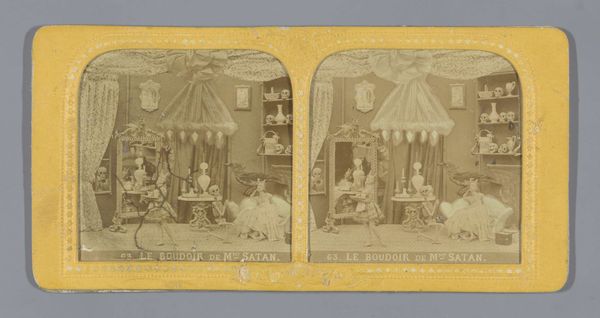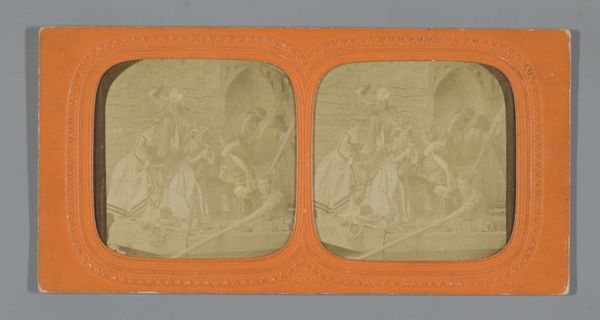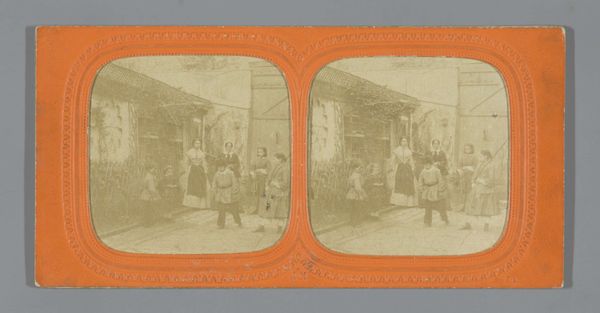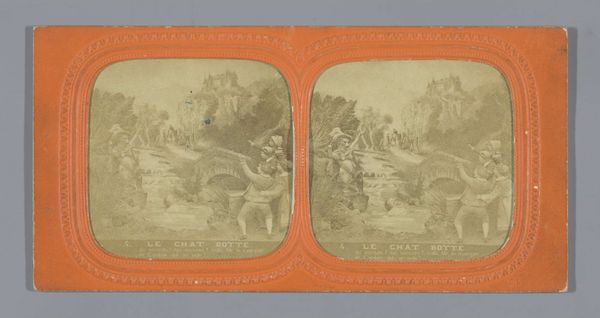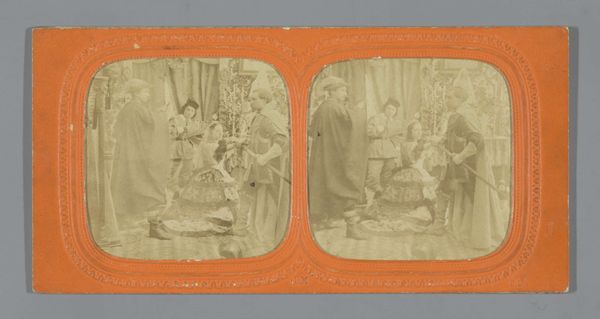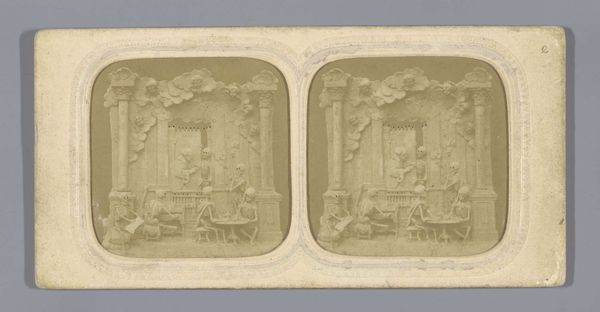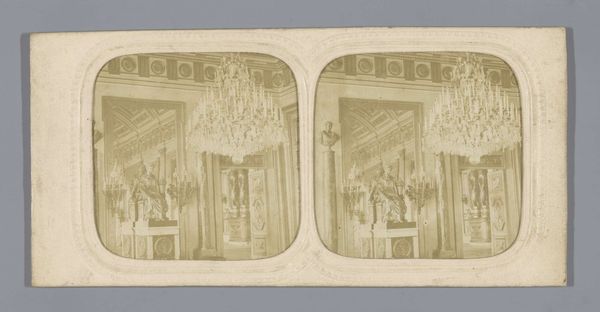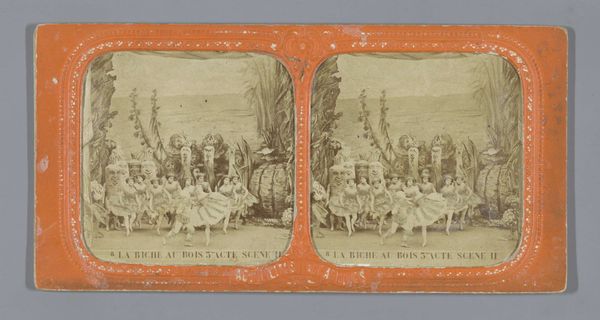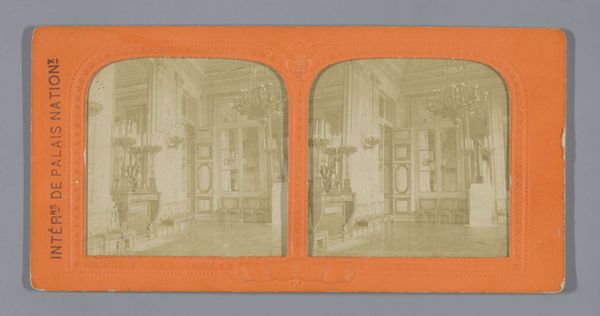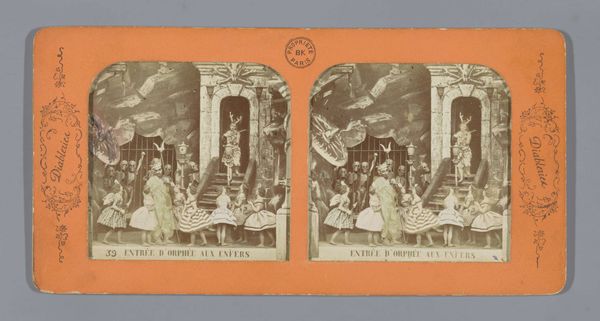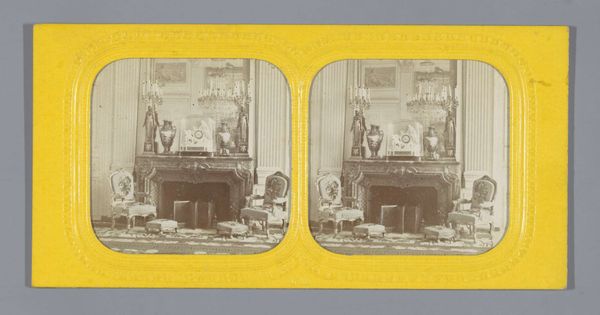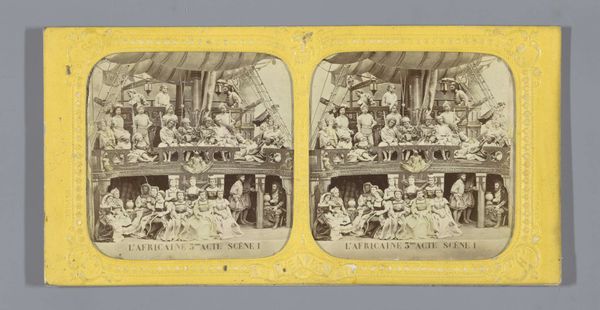
Dimensions: height 88 mm, width 175 mm
Copyright: Rijks Museum: Open Domain
Curator: Looking at this print from 1866, a stereoscopic photomontage, titled "Tweede bedrijf, achtste scène van Le Prophète," my immediate response is one of intrigue. It's like a stage frozen in time. Editor: The scene does appear rather posed and static, with limited visual depth created from this dual photographic process. The production seems elaborate for its time, using the new medium of photomontage. What materials and labor practices might have supported such a creation? Curator: The artwork depicts a scene from Giacomo Meyerbeer’s opera "Le Prophète." It captures a domestic interior, complete with figures in period clothing. Consider the performance, gender, and social hierarchies represented in staging a moment from the opera, likely aimed for bourgeois consumption. Editor: It speaks to the burgeoning market for visual entertainment and culture among a specific social class. Examining the material basis - the quality of paper, the inks used in the photographic printing - reveals something about the targeted consumer, perhaps eager for operatic content without ever having set foot in an opera house. Curator: Precisely. The very act of combining photography and staging, and then further producing it as a purchasable object speaks to the commodification of high culture. Consider that the image serves as both a form of documenting art as well as a promotional strategy to create a fanbase for this type of artwork in other ways as well. It's so multi-layered. Editor: Layered indeed, in a very literal, material way. It’s crucial not only what the image depicts, but *how* it was constructed and distributed, which in turn helps frame our understanding of Victorian notions of accessibility, and the transformation of entertainment in that period. The shift in visual culture in 1860s demanded for production strategies to disseminate this type of entertainment far and wide to many demographics. Curator: The tension between the romantic ideals of opera, with its grand themes and emotions, and the cold reality of its commercialization in these little photomontages… That's the crucial dialogue, isn't it? Editor: Yes. From material origins, we are led toward crucial intersectional narratives about class and cultural value. This image is so fascinating for doing exactly that, if you’re willing to examine every material piece that’s come together to give it life!
Comments
No comments
Be the first to comment and join the conversation on the ultimate creative platform.
